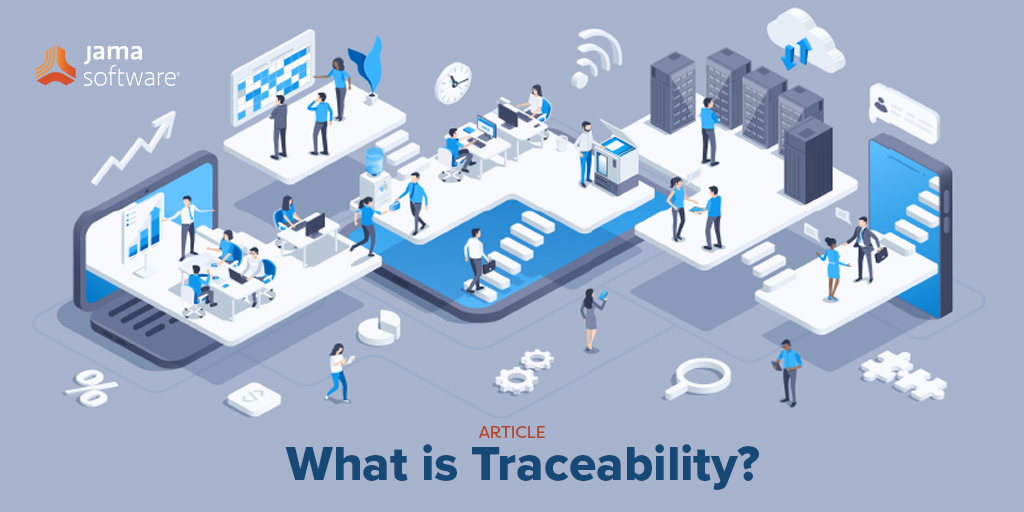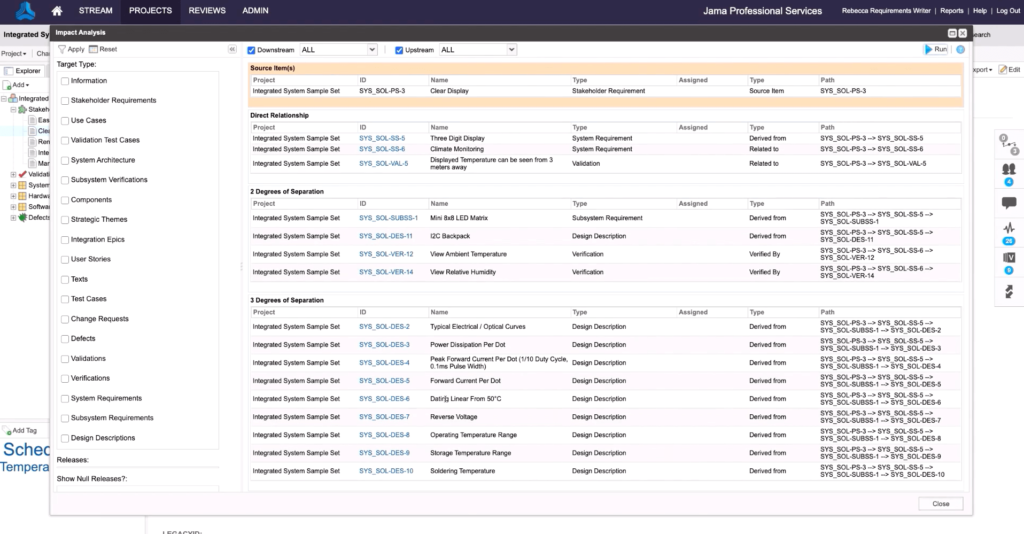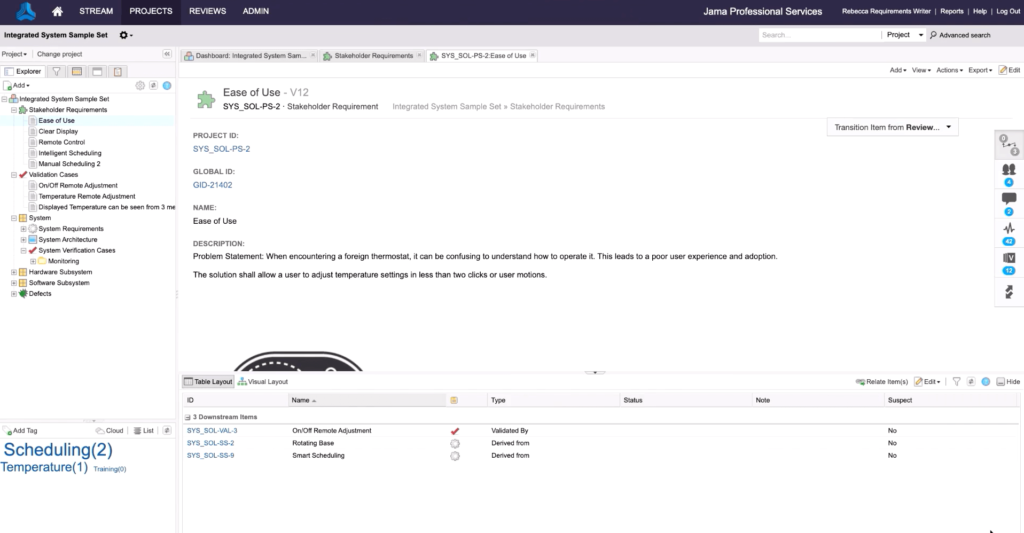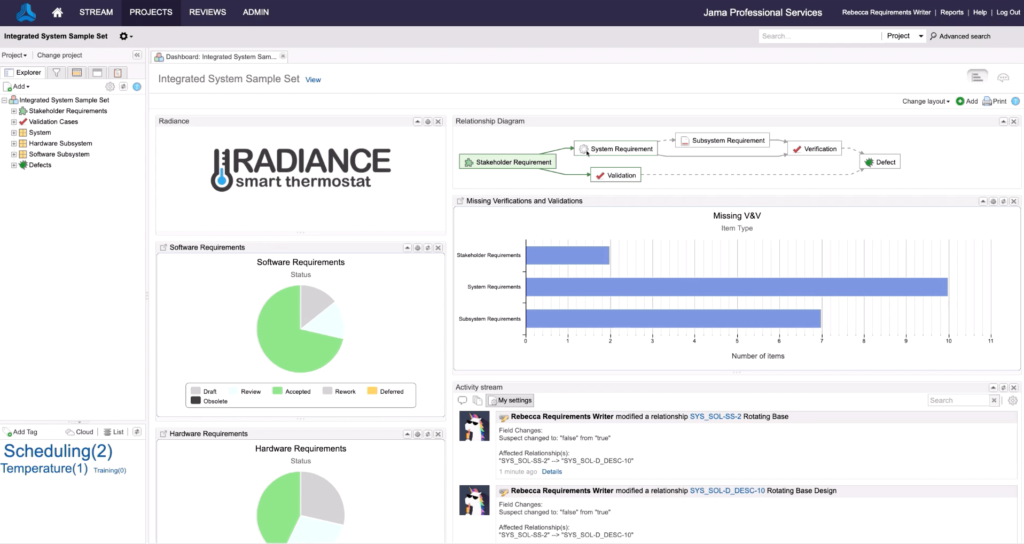
What is traceability? In this blog, learn its definition and why it is crucial for product teams.
Product complexity is growing at an exponential rate. As it does, requirements move between more and more departments and stakeholders throughout the course of the development process. Requirements traceability helps product teams overcome one of the biggest challenges they face with requirements management.
The number of decision points is higher than it’s ever been. Each decision needs to be made understanding the impact on the requirement itself and on the product overall. It is essential to maintain visibility into the activity taking place and to be able to tie it all together.
That’s where requirements traceability comes in. What follows is a look at the definition of requirements traceability, as well as its purpose, importance, and benefits. You’ll also find its common challenges, along with a few ideas to help you start overcoming those obstacles today.
The Definition
Traceability (or requirements traceability) is the tracking of requirements throughout the product development lifecycle. It is a documented thread that provides forward and backward visibility into all activity surrounding each requirement (including design, development, testing, and support). Requirements traceability helps minimize the risk of negative outcomes and maximize productivity. Its benefits include greater team efficiency, easier regulatory compliance, and higher-quality products.
What’s its Purpose and Importance?
Traceability enables product teams to associate a specific requirement with all the related project artifacts, as well as other requirements, both forward and backward, so that anyone can see how the activity relates to the requirement—and vice versa—at any point during development. This functionality, also called live traceability, fosters team collaboration and enables early detection of possible production risks.
Think of it this way: How important is it to have your products developed correctly in terms of definition, quality, and timing? Mission critical, right? That’s why requirements traceability is so critical.
Let’s take a look at some of the benefits of requirements traceability throughout the product development lifecycle. For example:
- Simplifies project estimates
- Enhances process visibility
- Increases development efficiency
- Improves impact analysis of change
- Demonstrates verification and validation
- Strengthens product quality
- Proves compliance or functional safety
A single line of sight on a requirement, or a digital thread, is supremely important for application lifecycle management (ALM) and product lifecycle management (PLM). Both endure tight timelines and increasing numbers of requirements — including those from regulations, where compliance is non-negotiable.
Knowing the relationship between requirements, risk, tests, and so forth, is the difference between developing a compliant product on time and getting stuck in rework, delaying launches, and dealing with unhappy stakeholders. With requirements traceability, you don’t have to compromise on speed or quality.
The bottom line is that end-to-end traceability confirms you’re building the right thing and helps you prove compliance or functional safety. Without it, your development efficiency and product quality are in jeopardy.
Forward, backward, and bidirectional: The mechanics of creating a digital thread
To connect all the phases of the product development lifecycle, from customer needs through support, four distinct kinds of links must be used to thread the process end-to-end. This includes high-level requirements as well as derived requirements—those not specifically defined but necessary for meeting defined requirements or having the system work as expected. Derived requirements must also be adequately traced to reap the full benefits of live traceability.
RELATED POST: Building an Audit Trail Through Live Traceability
Forward
There are two kinds of forward traceability: forward to requirements and forward from requirements. They both trace from an upstream component to downstream artifacts. The difference is in where they begin.
Forward to requirements traces from customer need to requirements. This is important because customer needs can evolve over time. If they do, requirements may need to change as a result. Following this type of forward traceability enables teams to be informed of changes in priorities at any time throughout development.
Forward from requirements traces relationships between requirements and corresponding downstream artifacts, including test cases. This type of trace ensures that each requirement is not only satisfied but verified and validated.
Backward
Like forward traceability, there are two kinds of backward traceability. This pair traces from an endpoint, or downstream work product, to upstream elements. The two types of backward traceability have differing starting points.
Backward from requirements gives insight on how a requirement came to be by linking the requirement to the customer use case it addresses. This enables teams to improve decision making by understanding the origin of a requirement.
Backward to requirements begins at performed work and traces to its requirement. It gives visibility into why specific items were created and how different pieces of a system fit together. Tracing in this way also allows testers to find gaps or missing requirements.
RELATED POST: Checklist: Selecting a Requirements Management Tool
Bidirectional
Bidirectional requirements traceability is the ability to perform both forward and backward traceability. Bidirectional traceability is optimal because it gives teams full visibility from requirements specifications through building, testing, changes, defects, and back again. Traceability of this caliber can only be achieved through automated requirements management tools, such as Jama Connect®.
Here’s some additional recommended content on traceability you might find helpful:
- 2023 Predictions for Medical Device Product Development - December 22, 2022
- 2023 Predictions for Industrial and Consumer Electronics Product Development - December 15, 2022
- Euro Roundup: MDCG Publishes Guidance on MDR, IVDR Authorized Representative Requirements - December 12, 2022


